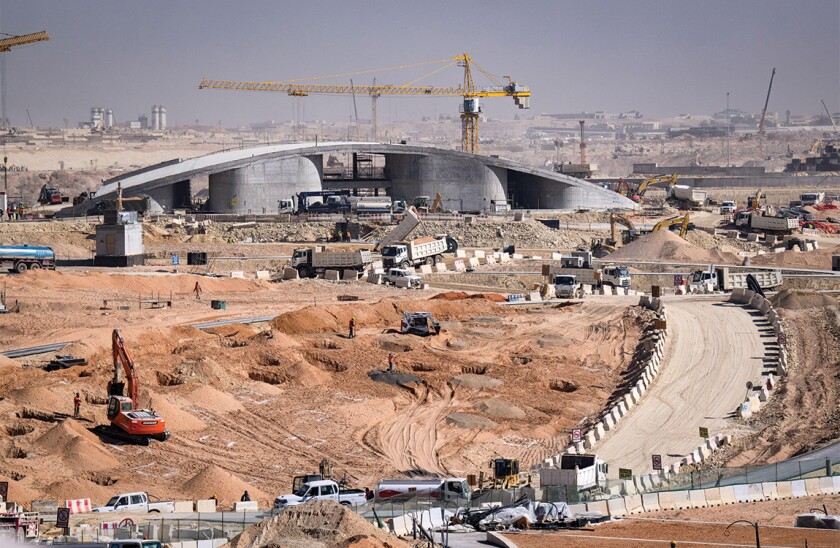In the last decade there has been an explosion of ‘Vision’ plans from emerging market governments, with many targeting 2030 as the finish line but some as far out as 2050.
Saudi Arabia’s Vision 2030 has been the most talked about, with its futuristic construction projects like the Neom site on the Gulf of Aqaba. There are also Qatar National Vision 2030, Kuwait Vision 2035, Abu Dhabi Economic Vision 2030, Egypt Vision 2030…
But after the Public Investment Fund — Saudi Arabia’s sovereign wealth fund — took an $8bn writedown on so-called gigaprojects earlier this year, there have been questions over whether these plans serve the purpose they are intended to.
“The danger is with these Vision plans that they can be too state-led,” Arnab Das, global economic counsellor and global macro strategist at Invesco, told GlobalMarkets. “There is a need for that because they need to coordinate and push things through, but if there are too many state decisions and not enough from the market you lose the dynamism and liberation that comes from private sector involvement.”
One advantage of Vision plans is that for countries — like oil-rich states in the Gulf — that do have wealth, just not development yet, they help to focus spending within the country.
“The Saudi PIF is an example of using the national patrimony of [hydrocarbon] resources in the ground to finance a new growth strategy at home, like a kind of development bank, instead of a traditional sovereign wealth fund that invests in assets abroad,” said Das. “It’s about driving domestic growth through investment at home, rather than [investing their] export surpluses in the US, EU, UK or other EMs, as they might have done before Vision 2030.”
Line in the sand
Saudi’s Vision 2030 is often spoken about with cynicism by international investors. Some of the plans, such as The Line, a linear city initially planned as 170km long and now being reported as closer to 2km in its first phase, are extravagant, costly and running behind schedule.
They are now warily eyeing the huge amounts Saudi is borrowing in the bond market — just under $60bn this year between the Saudi state-owned entities — and braying for clarity on progress.
But Kristian Coates Ulrichsen, a fellow for the Middle East at the Baker Institute in Houston, argued that this grousing is not what should matter most for Saudi Arabia.
“What investors fear is not that the plans will be cut back, but that as the costs escalate Saudi will charge on ahead and not cut back if it needs to,” said a debt capital markets banker in the region.
He said the key to making Vision plans useful was states being willing to accept that they will need to change and reprioritise them as they go along.
PIF’s writedown on the gigaprojects came amid lower oil prices and a growing Saudi fiscal deficit.
“I think [Saudi’s] Vision 2030 is exactly that — it’s a vision, not a plan,” said Coates. “It’s a sort of roadmap. Even if we get 30% of the way there, we’re a lot better than where we started.”
That may be true, but some of the gigaprojects were launched with such fanfare it may have raised expectations, especially among international investors.
But Coates said: “Ultimately, Saudis will judge Vision 2030 by whether they have jobs and a better quality of life, not by whether The Line gets built on time.”
Social change
And Saudi Arabia has made significant progress in other areas. It has already surpassed some of its targets, years ahead of schedule.
“For Saudi there are a lot of inherently very good measurements, like creating new jobs for the Kingdom or increasing the proportion of women in the workforce to 30%,” said Coates. “It is already 37%.”
He described an “uneasy tension” between the two sides of Vision 2030: the tangible objectives that Saudi citizens will benefit from and measure, and the rest.
But even as some of the many Vision plans fall short of hopes, Das said they were not useless.
“We’ve seen rich countries, particularly in Europe, falling behind in some areas, while China became a leader in tech, not a follower,” he said. “MAGA was essentially [a reaction to] this for the US. I’d argue that Europe needs a plan.”
Lead image: Construction of the King Salman Park in Riyadh, slated to be one of the largest urban parks in the world
